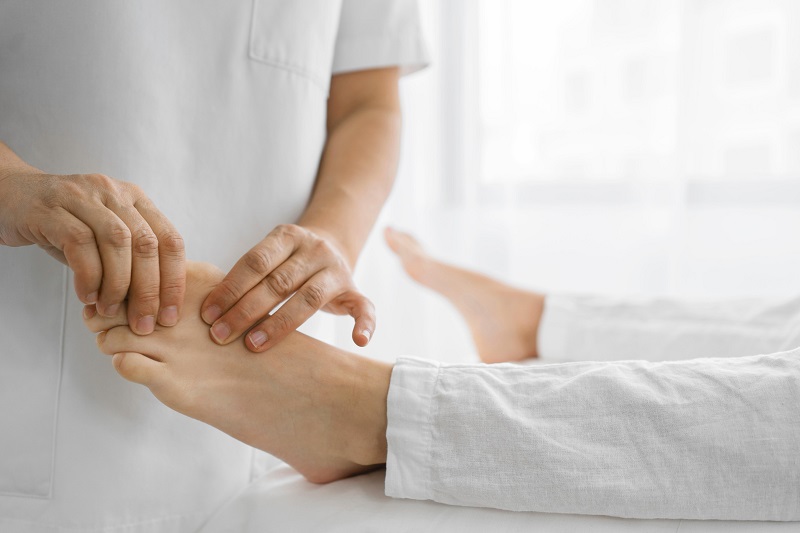Osteomyelitis represents the inflammation and destruction of the bone matrix caused by infection with certain pathogenic bacterial or fungal microorganisms. Bone infection in children manifests itself mainly in the long bones of the upper and lower limbs, while in adults it more frequently affects the spine (vertebral osteomyelitis) and hips.
What is osteomyelitis?
Osteomyelitis represents the inflammation and destruction of the bone matrix caused by infection with certain pathogenic bacterial or fungal microorganisms. Bone infection in children manifests itself mainly in the long bones of the upper and lower limbs, while in adults it more frequently affects the spine (vertebral osteomyelitis) and hips.
What are the causes of osteomyelitis?
The microbial infection of the cortical and cancellous bone that causes osteomyelitis can occur at the level of any bone structure of the body, the classification of the pathology being made according to the mode of spread of the pathogenic microorganisms as follows:
- Hematogenous osteomyelitis is determined by the endogenous spread of microorganisms through the bloodstream
- Osteomyelitis with a focus on exogenous spread without vascular insufficiency is the most common mechanism of bone infection caused by trauma or surgical interventions to reduce open fractures or the introduction of orthopedic implants
- Osteomyelitis with an exogenous spreading focus with vascular insufficiency affects in most cases the lower limbs of patients with diabetes
The pathogenic microbial agent most frequently involved in the occurrence of osteomyelitis is represented by S.aureus which causes infection at the bone level by means of continuity solutions at the integumentary level, due to traumatic or post-surgical causes.
The risk factors that predispose to the occurrence of bone infections are represented by diabetes, intravenous drug administration, smoking, immunodeficient conditions, hemodialysis, hip or knee replacement, sickle cell disease, peripheral arterial disease, malignant bone tumors, chemotherapy or radiotherapy and malnutrition.
Symptoms of osteomyelitis
Osteomyelitis is a disease that develops clinically with the appearance of the following signs and symptoms:
- Localized bone pain
- Functional and static impotence of the structure of the affected bones
- Edema and erythema at the level of the affected bone with joint deformation
- Bone crepitus
- Changes in color (hyperemia, pallor) and temperature at the level of the integuments of the affected superficial spaces
- Joint stiffness
- The exteriorization of purulent secretions in situations where there is a solution of continuity at the level of the integument overlying the affected bone
- Febrile syndrome is accompanied by chills and excessive sweating
- Altered general condition
- Neurological manifestations: lethargy, convulsions, psychomotor agitation
- Diagnosis of osteomyelitis
Establishing the diagnosis of osteomyelitis is carried out by the orthopedic doctor with the help of the information obtained from the anamnesis and the clinical examination of the patient, as well as those obtained following the imaging investigations represented by bone radiography, computer tomography and nuclear magnetic resonance with contrast material to assess the degree of inflammation. The paraclinical laboratory investigations used for the diagnosis of osteomyelitis are represented by culture on special growth media of fistulized purulent secretions, bone biopsy and blood cultures in the case of suspected hematogenous dissemination of the pathogenic germ.
Treatment of osteomyelitis
The treatment of osteomyelitis aims to remove the focus of chronic inflammation, replace the tissue defect, obtain remission, regain bone stability and obtain bone consolidation. eradication of the infectious outbreak is achieved by administering antibiotics in accordance with the specific antibiogram of the pathogenic germ involved in the generation of the bone infection. In certain situations, it may be necessary to surgically drain the formed abscesses (curettage and intramedullary lavage), resection of the devitalized bone tissue and replacement of infected prosthetic materials in situations where the infection occurs following a hip, knee or elbow prosthetic surgery.
In the situation where bone consolidation does not occur following the applied treatments, superficial debridement, plasty with local or microsurgical flaps, administration of parenteral antibiotic therapy and bone mineralizers until bone stability is achieved. Symptomatic treatment aims to reduce inflammation and pain syndrome by administering anti-inflammatories and painkillers.
Find out more:
- Osteomyelitis – https://www.sciencedirect.com/science/article/abs/pii/S0140673604167275
- Osteomyelitis – https://www.nejm.org/doi/full/10.1056/NEJM199704033361406
- Osteomyelitis – https://www.id.theclinics.com/article/S0891-5520(17)30010-7/fulltext


